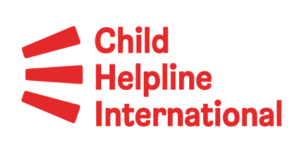Upon invitation from the Belgian Presidency of the EU, I attended the Expert Seminar on European and International Policy Agendas on Children, Youth Affairs and Children’s Rights. The objective of this event was to bring together experts and policymakers in these fields to discuss the European and international policy agendas with a focus on policy coherence.
Child Helpline International had been invited as a speaker to present during the workshop Mental health support for refugee & migrant children & young people. Our member in Belgium, AWEL, was also invited, and presented on their experiences of running a chat for Ukrainian child refugees.
Here, I outline the main points from my presentation.
Children in Migration, Child Helplines and Mental Health
Children in migration and refugee children are a group of children often at higher risk of having their rights violated. They may have had traumatic experiences and violations of their rights in their country of origin or during their journeys, or they may be experiencing discrimination or other issues in their countries of destination. They also tend to have much lower access to services and adequate support systems for a variety of reasons. These factors are likely to impact negatively on their mental health and wellbeing.
Child helplines are a key mental health support mechanism for children and young people in Europe. Every year, they provide support to almost 500,000 children on issues related to mental health. Most contacts relate to fear and anxiety, mood problems, suicidal thoughts and self-harming behaviour.
Despite this key role in mental health promotion for children and youth generally, child helplines are underused by children in migration. Children in migration require specific considerations to increase accessibility and raise awareness. Most of our members are willing to, and have knowledge to do this, but not the resources. The child helplines that have resources to specifically target this group do receive contacts from or regarding children in migration, and they report that the reason for contact is often related to issues around access to services such as education or health services, mental health and family relationships.
Barriers to Accessing Child Helpline Support for Children in Migration
Together with our members, we have identified multiple reasons why children in migration are underrepresented in accessing support from child helplines, including lack of awareness, lack of trust for new services and fear of outcomes, language barriers, and lack of technical accessibility. In many situations, there may also be an added dimension of cultural stigma attached to seeking help.
Lack of awareness is a substantial issue when it comes to children in migration contacting child helplines. If you are new in a country, you will not be aware of the services available to you. This lack of awareness and understanding of the nature of child helplines will also impact the trust a child have in a certain service. How do you know that the child helpline can be trusted with your most personal and private information?
As a Swedish person, I remember the outreach work of the Swedish child helpline – Bris – in school when I was a child myself. I understood how it worked and what confidentiality meant. Children who arrive in a new country may not get this information. There may also be a fear of law enforcement and social services that also extends to the child helpline.
There are also issues with the accessibility of the harmonized number for child helplines – 116 111. We have recorded issues with accessing 116 111 from a non-EU or a non-European country either not getting through at all, or at a cost. Language barriers are a huge accessibility issue, as most child helplines – who often operate on a lean budget and work with volunteers – only have resources to provide services in one language. Text-based services such as chat and translation software can be helpful to some extent, but not all child helplines in Europe provide text-based services, and translation software leaves room for error and can lack lingual nuances.
Good Practices – Child Helplines and Children in Migration
Those of our members who do have resources to target programmes and support for children in migration have the following things in common:
Programming and Counselling:
- They have specific strategies and programming for children in migration.
- They provide services in multiple languages.
- They understand the potential trauma of children in migration, and provide trauma-informed counselling.
- They understand the cultural elements of mental health and well-being, and provide culturally sensitive counselling without making assumptions.
- They are knowledgeable about and provide both practical information (e.g. shelter, legal) and psychosocial support.
- They are knowledgeable about the universal and specific rights for children in migration.
- They provide support and information for parents about children, as well as for children directly.
Awareness-Raising and Trust-Building
- They invest heavily in targeted awareness-raising of services for children in migration.
- They focus on trust-building with communities and children.
- They employ and/or involve people from the relevant community in outreach and counselling to build trust and provide accessible, high-quality services.
- They are thorough about explaining confidentiality to build trust.
- They work in close partnership with other stakeholders meeting/supporting children in migration to raise awareness and build mutual trust.
Collaboration and Data Collection
- They work in close partnership with other stakeholders who meet and support children in migration to provide integrated support and referral mechanisms.
- They build strong referral networks that can provide further guidance and assistance, especially since children in migration might have lower access to services.
- They collaborate with child helplines in emergency settings or countries of origin to share knowledge. The network of child helplines is key here.
- They develop data categories, collect and share data on children in migration with relevant agencies and organizations to improve policy and practice.
Practical Recommendations to Enhance Child Helpline Support for Children in Migration
Child helplines are well placed to support children in migration with information, support and referral, but many barriers remain. We propose the following practical recommendations to improve access to child helpline support for children in migration.
Child-centred approach – We need to investigate and map help-seeking behaviour among children in migration (child and youth participation), to identify the specific barriers and opportunities for support from child helplines and other key services in Europe.
Multi-sectoral coordination – We need to assess and map the role and capacities of child helplines to increase coordination and referral between organizations working with children in migration in Europe, and between child helplines themselves through the network.
Policy – Child helplines must be prioritized as key frontline services for child protection and child wellbeing, in policy and legislation around children and migration on EU-level and national level.
Accessibility – We need to remove technical barriers and expand 116 111 accessibility, by addressing specific EU policy and telecom issues and leveraging technology (e.g. methods of contact).
Funding – Increase and sustain funding for child helplines to expand accessibility, quality and awareness for children in migration on national level – willingness and knowledge among child helplines already exist.
Key Resources
- Voices of Children & Young People Around the World – Global Child Helpline Data from 2022
- Voices of Children & Young People Affected by the War in Ukraine
- 116 111 – Same Number, Same Service
- Factsheet: Children & Young People’s Mental Health
- Voices of Children & Young People in the EU (Child Helplione Data 2018)
Ronja Ulvfot
Regional Manager, Europe


